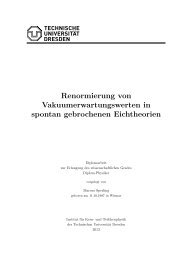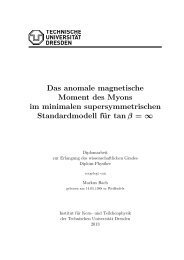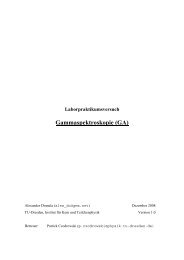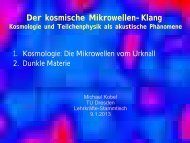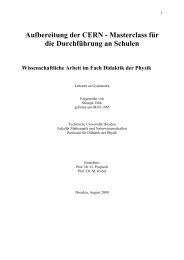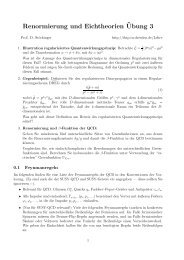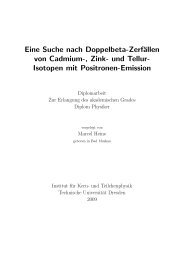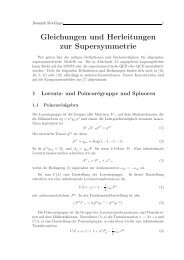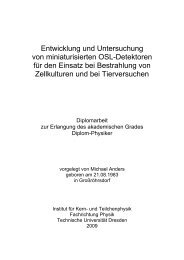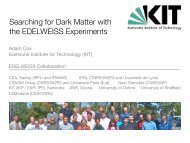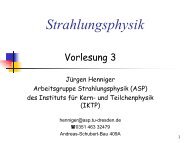a design study for a cobra upgrade to - Institut für Kern- und ...
a design study for a cobra upgrade to - Institut für Kern- und ...
a design study for a cobra upgrade to - Institut für Kern- und ...
You also want an ePaper? Increase the reach of your titles
YUMPU automatically turns print PDFs into web optimized ePapers that Google loves.
48 4 Scintillation detec<strong>to</strong>rs<br />
gap. Though this reduces the transmission from the scintilla<strong>to</strong>r <strong>to</strong> the<br />
WLS, it also reduces the transmission of the re-emitted light in<strong>to</strong> the<br />
scintilla<strong>to</strong>r and increases so the part of detected light. Whether WLSs<br />
improve the detected signal depends strongly on the scintilla<strong>to</strong>r geometry<br />
and produced scintillation light. For scintilla<strong>to</strong>rs with an emission<br />
spectrum higher than the optimal wavelength of the readout electronic<br />
a shift can improve the detection efficiency significantly. A stepwise<br />
shifting with more than one WLS, <strong>to</strong> reduce the readout area further, is<br />
also possible.<br />
SIZE OF SENSITIVE AREA. The just discussed techniques do improve<br />
the detected signal. Nevertheless, especially <strong>for</strong> big scintilla<strong>to</strong>rs, the<br />
only way <strong>to</strong> obtain a usable signal is often <strong>to</strong> increase the readout area.<br />
There<strong>for</strong>e either more or bigger readout devices are necessary. Multiple<br />
readout devices at opposite scintilla<strong>to</strong>r sites improve the uni<strong>for</strong>mity of<br />
light collection. With coincidence analysis, backgro<strong>und</strong> due <strong>to</strong> dark<br />
current of the readout devices can be reduced. Moreover a position<br />
reconstruction in addition <strong>to</strong> an energy detection is also possible with<br />
more than one readout device. Lee et al. [42] reported position accuracy<br />
of less than one cm with 40 cm long CsI:Tl coupled <strong>to</strong> two red enhanced<br />
PMT.<br />
4.2.3 Energy resolution<br />
The energy resolution of a scintillation detec<strong>to</strong>r depends on the resolution<br />
of the scintilla<strong>to</strong>r, the collection efficiency of the scintillation light<br />
and the intrinsic resolution of the electronic readout device.<br />
The resolution of the scintilla<strong>to</strong>r is determined by the amount of produced<br />
scintillation pho<strong>to</strong>ns and their variation. Thereby, the efficiency<br />
of radiation absorption limits the amount of ionizing particles which<br />
can deposit their full energy. This is especially <strong>for</strong> gamma ray detection<br />
at low count rates a limiting fac<strong>to</strong>r and materials with high Z and high<br />
density are preferred.<br />
Non-uni<strong>for</strong>m distributions of the luminescence centres in the lattice<br />
produce local variations of the intrinsic scintillation efficiency. As was<br />
discussed previously, L also depends on dE/dx. Accordingly, the<br />
light yield <strong>for</strong> pho<strong>to</strong>ns of the same energy varies in dependence of<br />
the amount and energy of produced pho<strong>to</strong>, Comp<strong>to</strong>n, pair and Augerelectrons.<br />
Initially produced pho<strong>to</strong>electrons have higher energies than<br />
Comp<strong>to</strong>n electrons and a subsequent pho<strong>to</strong>electron, produced by inci-



